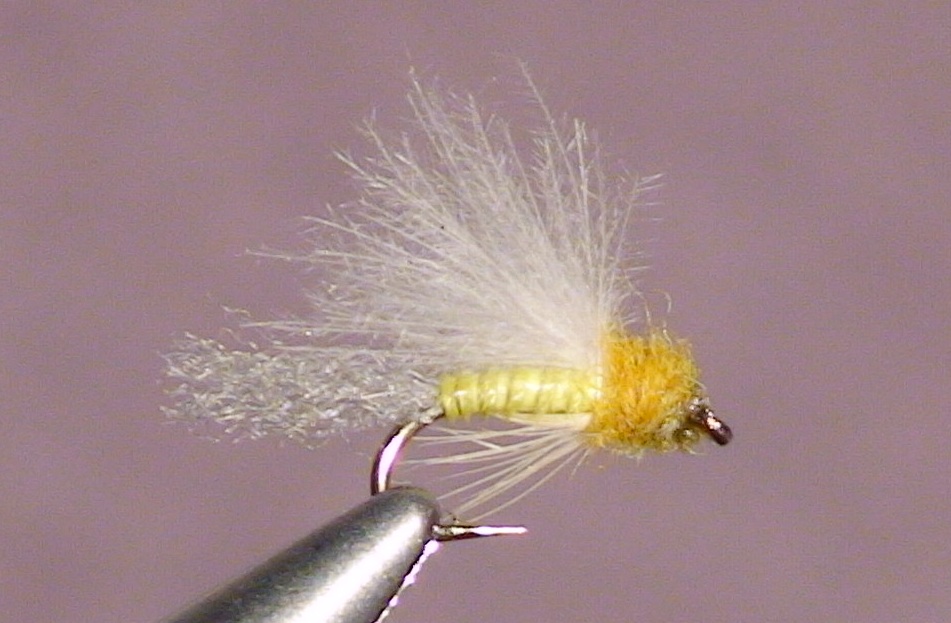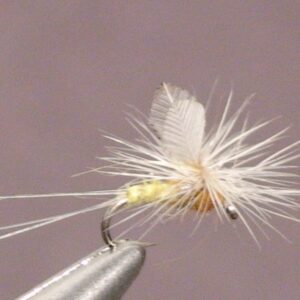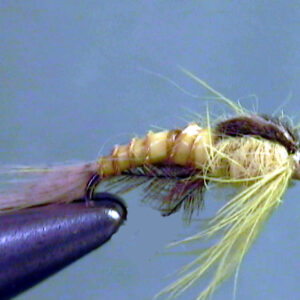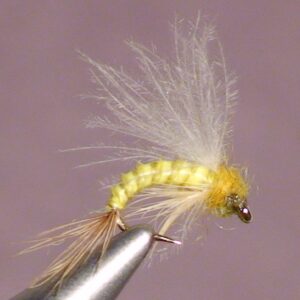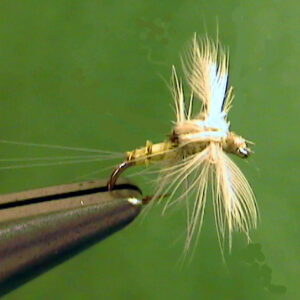Hook Size: 16/18
The Perfect Fly Sulfer Dun Emerger with trailing shuck is an excellent imitation of the actual emerger as it sheds its skin near the surface of the water as it changes into a dun. It looks more like the dun than the nymph. The fly should be fished just under the surface or in the surface skim.
The Sulphur Dun nymphs usually emerge just under or in the surface skim. The
water is usually fairly smooth in the locations the hatch occurs. This means you
have to make a fairly good presentation to prevent spooking the trout feeding on
the emerging duns.
The Sulphur nymphs propel themselves to the surface where they shed their
nymphal shucks. This by far the easiest time for the trout to eat them. They are
helpless at the time. The duns usually hatch in the middle to late afternoons
depending on the weather. This usually occurs between 1:00 and 4:00 P. M., but
in most cases in the later part of the afternoon
Imitations of the emerger should be presented in the shallow, slower moving
water adjacent to the slower moving ripples and runs or in areas of the pools the
crawler nymphs live in.
Emerger Presentation:
The smooth, slow flowing areas of water that the sulphurs hatch in may require
you to fish for individual fish that are rising. This is best done using a down and
across presentation. Many anglers call this “technical” fishing. It requires the
same type of presentations sometimes necessary for fly fishing spring creeks or
smooth flowing tailwaters. In fact, the majority of the sulphur mayflies live in
spring creeks and tailwaters.
You may not be able to get very close to trout feeding on emerging sulphurs.
This means a longer cast is necessary. In the slower moving, smooth water this
requires a well presented fly. You may want to use a longer and lighter than
normal leader. Leaders that are ten to twelve feet and from a 5X to 7X size are
preferred in most cases.
You want the “Perfect Fly” Emerger and Emerger with Trailing Shuck to float flush
in the surface. The plain emerger is more imitative of the nymph than the dun
and the emerger with the trailing shuck is more imitative of the dun than the
nymph. It’s antron shuck imitates the nymphal shuck before it is separated from
the dun. Both flies take trout when they are hatching and usually more readily
than the dun imitation.
The emergers are not as easy to fish as the dun, however. Because they float
level with the surface skim and are much more difficult to see on the water to
detect the trout taking the fly, they require a lot of concentration. The trailing
shuck version is easier to see than the plain emerger, so if you’re having trouble
seeing your plain emerger fly, switch to the trailing such version.
Copyright 2013 James Marsh
